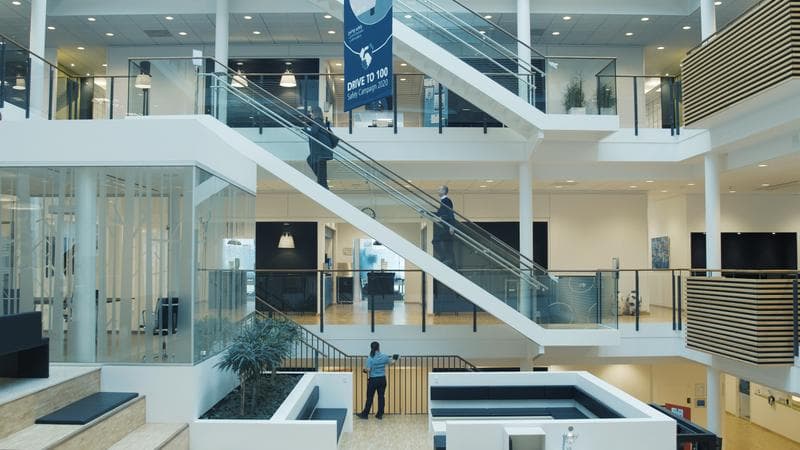Workplace as a strategic tool for business optimization Despite the obvious impacts of environment on us as human beings, research continues to show that only 13% of global workers are highly engaged and highly satisfied with their workplace. The inverse is true as well, with 11% of employees being highly dissatisfied with their offices, as well as highly disengaged.
To turn this around, business managers must change their perception of workplace from being an operational expenditure to an active resource that can be utilized to drive business optimization, and as a tool for desired behavioral change.
As Gitte Andersen, ISS Global Head of Workplace Management & Design, explains:
“To overcome the competitive barriers that many companies face and strengthen organizational performance, it is important that top leaders consider how their office space supports the organization’s goals and objectives. For instance, if a company is focused on improving collaboration, then having individual offices, where employees do not interact with their colleagues for most the day, is not an optimal solution.
Even considering the way employees utilize an office environment can support a company’s strategic objectives. For instance, research indicates that knowledge workers are found at their desks 30-55% of the time. This begs the question: Are rows of empty desks an efficient use of an office’s space? And, how could this space be utilized for other activities that create organizational value?” The workplace cannot do it alone – it takes people to bring it life Of course, space is not the quintessential factor in a workplace. We do not for a moment imagine that, for instance, culture and values can be built into the walls or fixated into the paint, when a building is erected.
It takes people bring it to life.
So, while workplace design creates the physical environment necessary to facilitate a change and/or to drive optimization — it is service with a human touch that can create an emotional connection, thereby reinforcing and empowering the desired culture, and making the organization's values come to life.
Design-thinking is at the core of optimized workplaces To make a workplace work— service and space must be aligned and designed for specific desired outcomes, and with focus on employee needs.
Working with dedicated Workplace and Service Design methodologies allows us to focus on what services create the highest emotional value for employees— what physical factors either improve or decrease the employee workplace experience, and optimize the space and service towards the desired business outcomes.
For example, for managers looking to optimize employee efficiency and to facilitate those struggling with their work/life balance— daycare or babysitting services can be optimal solutions that fulfill both objectives, whilst improving the overall workplace experience.
In other instances, and for businesses looking to move away from a silo type structure to a flatter and more collaborative set up, it may be worthwhile to design an open workspace. Through an open office layout, chance encounters are enabled, and within the service facilitates areas (e.g. during coffee breaks) social interactions are encouraged.
In the end, no matter the preferences and needs— it is only when combining workplace and service design thinking that we can create a holistic workplace experience, where all space has a meaning and every service encounter can make a difference in a person's everyday life.




